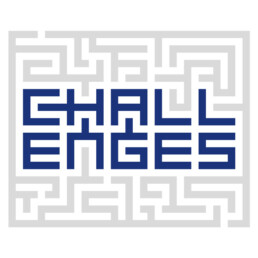MASSACHUSSETS INSTITUTE OF TECHNOLOGY


Researchers and visually impaired involved: Prof. Seth Teller, Prof. Daniela Rus, Prof. Anantha Chandrasakan, and the group of Researchers of MIT: Nick Wang, Nathan J Ickes, Jordan Allspaw, Dongsuk Jeon, Rahul Kumar Namdev,William Li, Robert Katzschmann, Jingjin Yu, Paul Parravano, Prof. Laura Giarré.
Direct and Indirect Beneficiaries of the Project: The national and international community of the blind, when the prototype becomes a usable product, because its use will ensure an increase in their autonomy with a high social impact in terms of major access to the social and working context. The scientific community, for the technological and scientific development of the system.
System of intelligent perception and wearable tactile display with high resolution aimed at increasing the independence of blind people
MASSACHUSSETS INSTITUTE OF TECHNOLOGY
The autonomy of the visually impaired in his movements always depends on the constant assistance of a person, an animal or a stick that inadvertently affect his life both social and of inclusion in the workforce, thus limiting complete integration.
ABF working with the multidisciplinary team of researchers and scientists CSAIL (Computer Science and Artificial Intelligence Laboratory) of MIT (Massachusetts Institute of Technology) has identified two areas of focus for the development of assistive technology for blind users. These research areas that are safe navigation and user interface are the points on which work has focused in the course of 2014.
The idea is to develop systems that allow the safe navigation, or ensure the blind person to walk autonomously avoiding obstacles. The blind person with the aid of a wearable system can receive information by means of vibrations which inform him/her of the presence of obstacles. The use of algorithms of computer vision, robotics systems and the use of new technologies, wearable and miniaturized in this phase two, wants to move from the prototype developed during the previous two years, to a system that is lightweight and wearable and autonomous and that does not use a computer that you have to carry in your rucksack. The purpose is to provide a non-invasive system also from a point of view of social acceptance, while maintaining the same level of performance.

The CHALLENGES PROGRAM brings together world-class experts to find innovative solutions to help people cope with their disabilities/discomfort and overcome limits imposed by them. Thus, this program is done with the development of projects in the fields of scientific, technological research and social innovation.
LocalitàCambridge, Boston - USA COMPLETED PROJECT
Project sheetCHALLENGES Program Project status:
Project status: